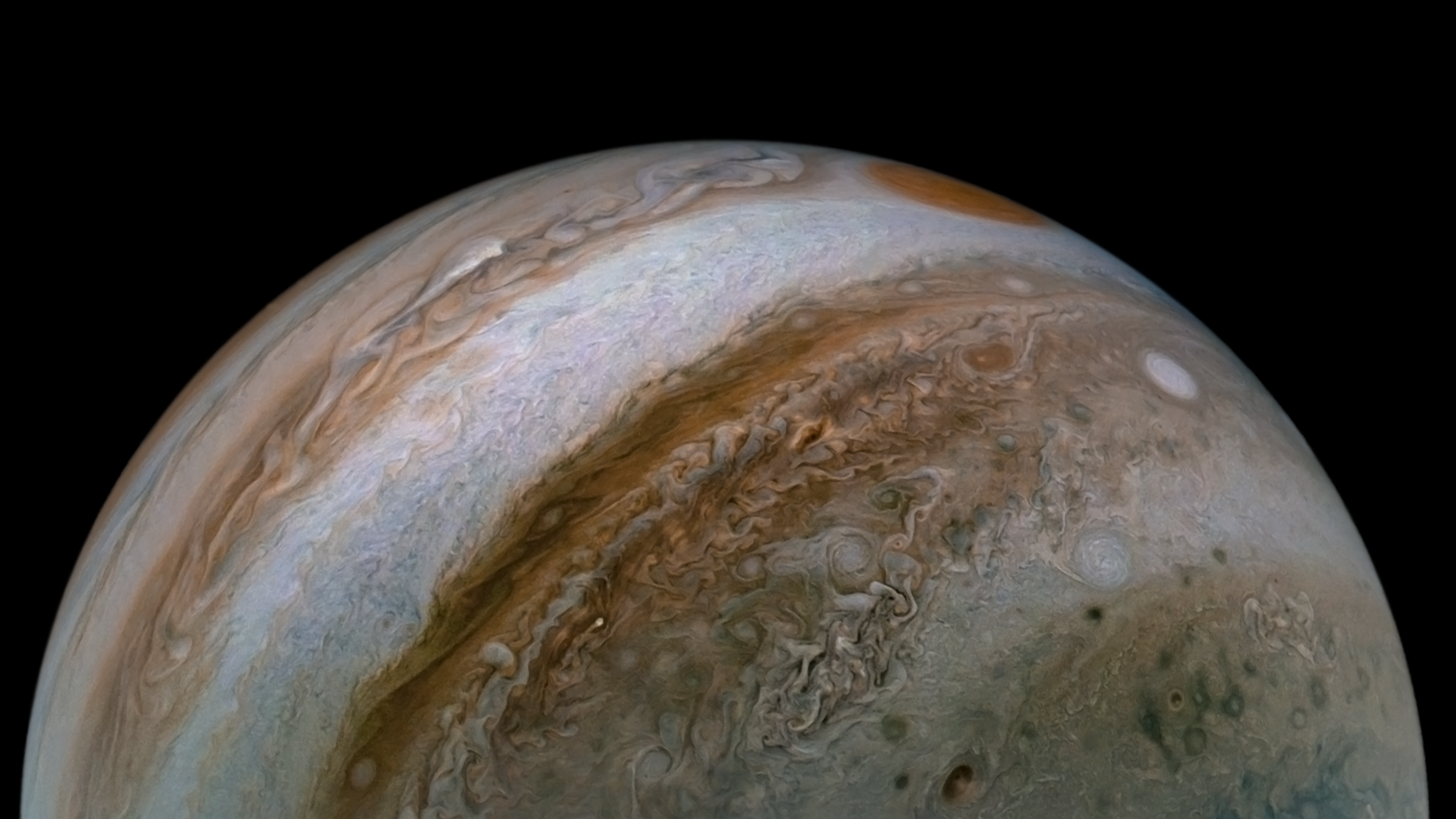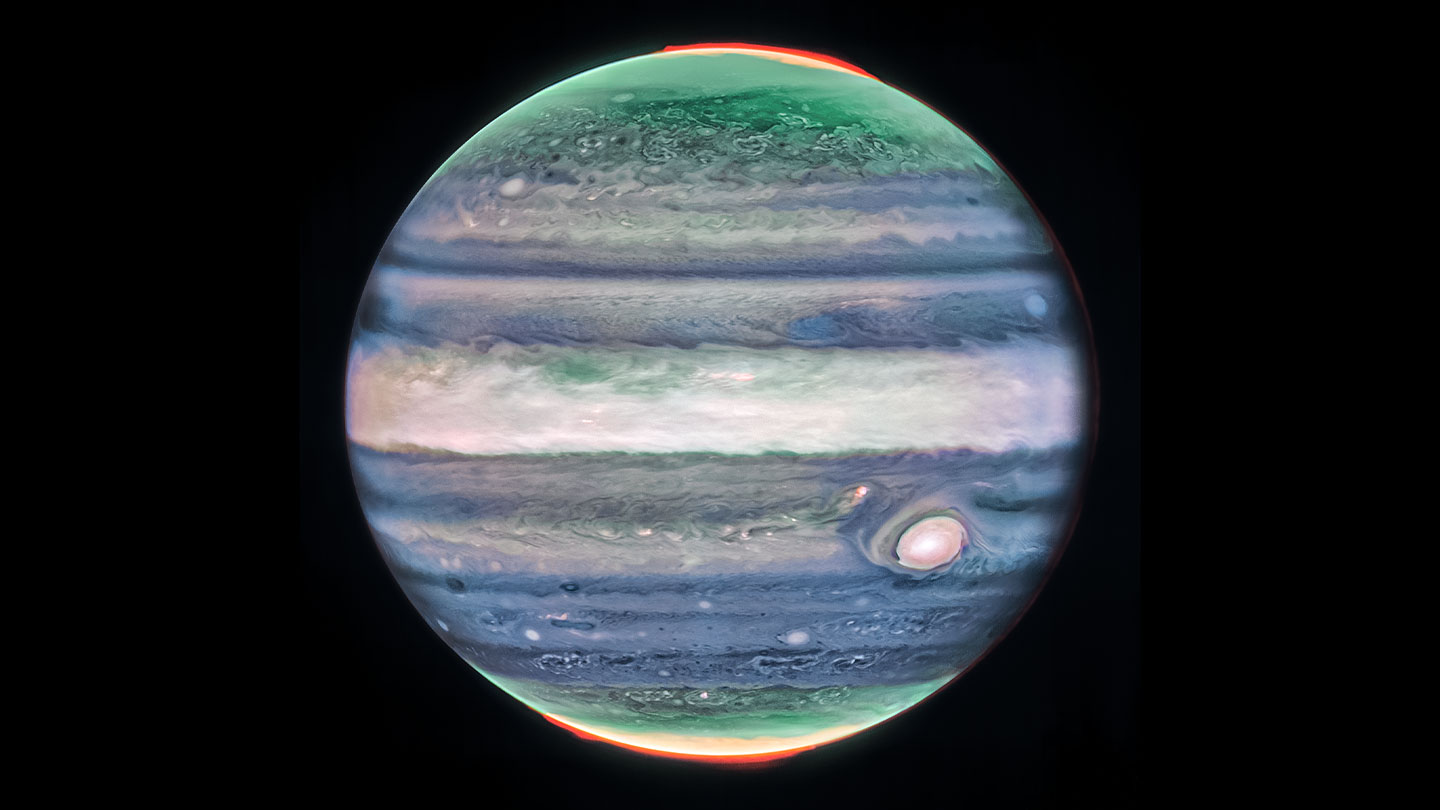In a groundbreaking discovery, NASA’s James Webb Space Telescope (JWST) has identified a new high-speed jet stream in Jupiter’s atmosphere. This significant finding, unveiled in 2024, provides a deeper understanding of the gas giant’s atmospheric dynamics and the intricate weather systems within our solar system’s largest planet. This article delves into the details of the discovery, its implications, and the advanced technology that made it possible.
The Discovery
JWST’s Advanced Capabilities
The JWST, launched in December 2021, is the most powerful space telescope ever built. Its cutting-edge instruments allow scientists to observe celestial objects in unprecedented detail, capturing high-resolution images and spectra across a wide range of wavelengths. This has enabled the identification of new atmospheric features on Jupiter that were previously undetectable.
The High-Speed Jet Stream
The newly discovered jet stream is located at a latitude of approximately 50 degrees north, within Jupiter’s stratosphere. Moving at an astonishing speed of around 370 kilometers per hour (230 miles per hour), this jet stream is significantly faster than any previously observed wind patterns on the planet. The jet stream was identified through detailed analysis of the infrared data collected by JWST’s Mid-Infrared Instrument (MIRI).
Implications of the Discovery
Understanding Jupiter’s Atmosphere
This discovery has profound implications for our understanding of Jupiter’s atmospheric dynamics. Jupiter’s atmosphere is known for its complex and turbulent weather systems, including the Great Red Spot and numerous other storms and vortices. The identification of this high-speed jet stream adds a new dimension to our knowledge of these systems, indicating that there are fast-moving winds in the planet’s upper atmosphere that play a crucial role in shaping its weather patterns.
Comparative Planetology
The discovery also contributes to the broader field of comparative planetology. By studying the atmospheric dynamics of Jupiter, scientists can gain insights into the behavior of atmospheres on other giant planets, both within our solar system and in exoplanetary systems. This can help in understanding the atmospheric processes of planets like Saturn, Uranus, and Neptune, as well as gas giants orbiting other stars.
Climate and Weather Models
The data from JWST’s observations will be used to refine models of Jupiter’s atmosphere, enhancing our ability to predict weather patterns on the planet. These models can also be applied to study the atmospheres of exoplanets, aiding in the search for potentially habitable worlds.
The Technology Behind the Discovery
JWST’s MIRI Instrument
The Mid-Infrared Instrument (MIRI) on JWST played a pivotal role in this discovery. MIRI operates in the mid-infrared range, which is particularly effective for studying the thermal emission from planetary atmospheres. Its high sensitivity and resolution allowed scientists to detect the subtle temperature variations associated with the jet stream.
Data Analysis Techniques
Advanced data analysis techniques were employed to extract meaningful information from the vast amounts of data collected by JWST. These techniques include sophisticated image processing algorithms and spectral analysis methods, which enabled the precise identification of the jet stream’s location, speed, and direction.
Future Research
Continued Observations
JWST will continue to observe Jupiter and other planets in our solar system, providing ongoing data to further our understanding of their atmospheres. Continued observations will help to monitor the behavior of the newly discovered jet stream and its interactions with other atmospheric features.
Broader Applications
The techniques developed for this discovery will be applied to the study of exoplanets, allowing for the detection of atmospheric features on worlds beyond our solar system. This will enhance our understanding of the diversity of planetary atmospheres and the potential for habitable environments.
Conclusion
The discovery of a new high-speed jet stream in Jupiter’s atmosphere by the James Webb Space Telescope marks a significant milestone in planetary science. This finding not only deepens our understanding of Jupiter’s complex weather systems but also provides valuable insights for the study of other planets. The advanced capabilities of JWST and the innovative data analysis techniques employed in this research underscore the importance of continued investment in space exploration and scientific discovery. As JWST continues to unveil the mysteries of the universe, we can look forward to many more groundbreaking discoveries that will expand our knowledge of the cosmos.


